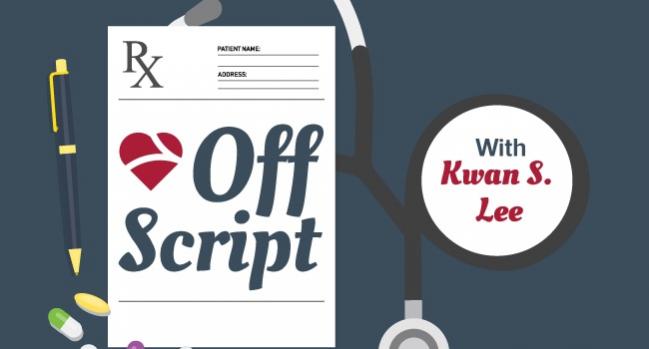Off Script: The TWILIGHT of Aspirin? A Brief History of ASA’s Rise and Fall
The TCT 2019 late breaker speaks to the slow erosion of aspirin’s position in the pantheon of cardiovascular pharmacology

SAN FRANCISCO, CA—Aspirin has a long and storied history, used in the naturally derived form of willow bark extracts for at least the last 2,000 years to treat fevers and pain. Artificially synthesized for the first time in 1860, its widespread use began following the discovery of an efficient manufacturing method by Bayer, a German drug company at the end of the 1890s. It quickly rose in popularity in both North America and Europe as an anti-inflammatory.
Its cardiovascular effects were first noted in the 1950s with the recognition that it decreased thrombosis and increased bleeding, although the exact mechanism of platelet aggregation and activation inhibition was not discovered till 1971. Several cardiovascular trials throughout the 1970s and 1980s then began to lay the ground for its efficacy as a primary and secondary preventive agent for cardiovascular events and use of aspirin increased steadily to eventually establish it as the cornerstone of cardiovascular event prevention pharmacotherapy.
It was against this background that percutaneous coronary intervention with stenting arrived on the scene. Cardiologists quickly realized that a stronger antiplatelet regimen was required to prevent stent thrombosis early after implantation, and the P2Y12 receptor antagonists ticlodipine then clopidogrel rapidly proved to be effective. It is important to understand at this point that a decision was made to add to aspirin and that both agents were not tested to replace aspirin. The combination reduced cardiovascular events and paved the way for the dual-antiplatelet strategy, although it was also observed that this was offset by an increase in bleeding. Uncertainty about the heterogeneity in clopidogrel efficacy due to variation in either genetics or hepatic metabolism and drug interactions, coupled with the 2006 “SCAAR scare” showing increased stent thrombosis with first-generation DES, led to a bias towards favoring thrombotic event prevention. A reasonable arbitrary decision was thus made to mandate 1 year of dual antiplatelet therapy (DAPT).
For more than a decade, these clinical conundrums sparked a furor of research and iterative progress with the development of two more consistent and potent ADP antagonists: prasugrel and ticagrelor. As the number of drug-eluting stents implanted grew globally and what with the mandated 1-year administration of DAPT, many patients who were also on warfarin found themselves also on DAPT and the new term “triple therapy” was coined. These patients not surprisingly were noted to have high rates of significant bleeding leading to a decrease in net clinical benefit as gains in lower event rates were offset. Strategies to decrease bleeding risk such as discontinuing aspirin were then tried to good effect, led by the WOEST trial. Conversely, it was shown that in patients at low bleeding risk, extending the use of DAPT, stratified by the DAPT Score, resulted in improved event outcomes up to 3 years.
Progress was not limited to pharmacotherapy. Concurrently, stent design improved with the recognition that first-generation DES polymer contributed to the high stent thrombosis rates and subsequent improvements in polymer and stent design have resulted in significant clinical gains, which have recently appeared to plateau, allowing us to once again focus on the increased possibility of earlier DAPT cessation. This was accomplished in low-risk patients undergoing second generation DES implantation in 2013 with OPTIMIZE and RESET. On the anticoagulation front, novel anticoagulants were introduced and proven to be superior to warfarin with regards bleeding reduction.
As outcomes have improved and our pharmacological options expanded, we have been able to once again return to the question of aspirin, allowing us for the first time to consider stopping a therapy instead of adding a new drug for increased benefit. Change has arrived quickly. Last year saw three major clinical trials casting doubt on the role of aspirin in primary prevention with ARRIVE (testing baseline moderate risk patients), ASCEND (diabetics) and ASPREE (healthy elderly patients). All showed some cardiovascular event benefit but the increased risk of bleeding offset the benefits, leading to an updated ACC/AHA 2019 recommendation to drop aspirin for primary prevention in patients >70 years or with increased bleeding risk. This was then quickly followed by STOPDAPT-2 and SMART-CHOICE which extended the idea by showing that aspirin could be discontinued and clopidogrel monotherapy used in low risk patients post PCI.
The TCT 2019 late-breaking presentation of the TWILIGHT trial results, casts further doubts on aspirin’s role post-PCI and further expands on the aspirin exclusion trend. In this study, a ticagrelor monotherapy versus ticagrelor and aspirin strategy was compared in a double-blind fashion in high thrombotic clinical and angiographic risk patients who had successfully completed 3 months of DAPT with good compliance and no events. A total of 7,119 patients were randomized, and it is worth noting that patients with STEMI or prior stroke were excluded. Dropping aspirin was shown to result in a decrease in clinically significant bleeding with no increased risk of MI, death, or stroke. Supporting the clinical outcomes, a mechanistic platelet substudy showed no change in platelet inhibition with cessation of aspirin.
These results are in contrast to the overall findings of GLOBAL LEADERS, presented earlier this year. That study looked at all patients, low- or high-risk, undergoing PCI with a biolimus DES. A 1-month ticagrelor DAPT strategy followed by 23 months of ticagrelor monotherapy was compared with a 1-year ticagrelor DAPT strategy followed by 1 year of aspirin monotherapy. No difference was seen in bleeding or thrombotic risk reduction. Although the overall findings are surprising given what was seen in TWILIGHT, a substudy of GLOBAL LEADERS studying a TWILIGHT-like patient cohort presented here confirmed similar reductions in bleeding with no change in event rate.
Is it time for us to bid goodbye to aspirin? I think such a statement is premature. Aspirin remains a cornerstone of secondary prevention, with the recommendation to revert to aspirin after the trial period. The permutational complexity of the increasing number of variables to consider—the possible antiplatelet and antithrombotic combinations with variations in dosing, drug-eluting stent type, and an individual patient’s underlying risk level for both thrombosis and bleeding—will keep us on our toes for years to come.
Off Script is a first-person blog written by leading voices in the field of cardiology. It does not reflect the editorial position of TCTMD.
Kwan S Lee, MD is an Associate Professor of Medicine at the Sarver Heart Center, University of Arizona. As interventional…
Read Full Bio

Comments